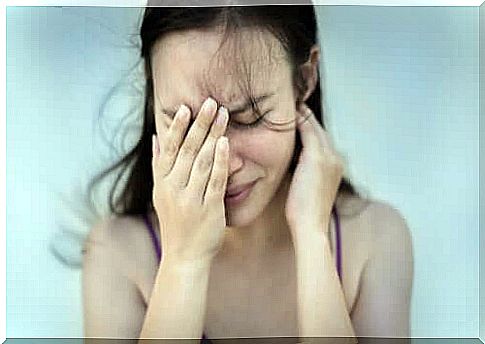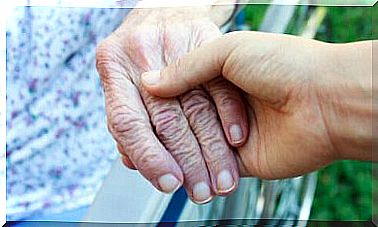The Chemistry Of Anxiety And Its Effects On Humans

The chemistry of anxiety is something that is becoming increasingly relevant, and it is therefore even more important than ever to know what it involves so that you can take appropriate action.
If you know what it is about so that you can help yourself and others to avoid catastrophic thinking and other common symptoms of anxiety.
In this article, we will talk about the chemistry of anxiety to explain what it is that causes it and the increase in T cells in your body.

Effects of the chemistry of anxiety: is anxiety bad?
Many experts believe that stress and anxiety are the same thing. However, one of them tends to be stigmatized in today’s society.
They are both related to the body’s stress response, which is a natural biological process that is important for human survival. You should therefore not consider anxiety to be neither good nor bad.
When a perceived threat makes people scared or anxious, it will often trigger the fight-or-flight response.
Man has evolved with this mechanism because it has ensured our survival. Without it, you would not have been able to act quickly and make decisions on the spot; your body had not had the physical ability to protect itself.
The problem arises when your body triggers a stress response to “threats” that are not dangerous or real. Your body is therefore preparing to flee or fight, even though the reaction is completely unnecessary.
The chemical and emotional responses involved in this process are what make you feel weird when you are anxious.
Effects of the chemistry of anxiety
Evaluating the threat: struggle or flight
When you identify a threat, you evaluate it in a few seconds. People are no longer hunted by lions so often, but the reaction fits in with everything that is perceived as a threat.
It can be anything from a simple comment to a strange and sudden sound that is considered threatening.
The consequence of chemical reactions
After evaluating the threat, the body’s chemistry will begin to roll. This hormonal activation gives rise to many changes in the body, and not just the ones you expect.
The stress response causes many internal changes that are not always obvious.
In response to the hormones, your heart rate will increase to facilitate blood flow and increase your oxygen levels. This is characteristic of anxiety and one of the things that patients often work on the most.
Some of the techniques that psychologists use to reduce the response to stress are controlled breathing and progressive muscle relaxation.
Both techniques use breathing as a way to reduce anxiety. Proper breathing can reduce your heart rate and help calm you down.
During the stress response, your spleen will also contract and release many red blood cells. This is very useful in case of injuries.
Many of the “threats” we experience today do not represent true physical harm, but keep in mind that your ancestors fled from wildlife to protect themselves.
The red blood cells are part of your immune system and protect you from infections.
The liver synthesizes and releases sugar into the blood while bronchial dilation increases your breathing capacity in response to the greater need for oxygen.
Another consequence of these chemical reactions is that the pupils dilate, allowing more light to enter your eyes so you can see more easily.
The last thing your body needs in the event of a potential threat is to increase the coagulation in the body and increase the circulation of T cells (a type of white blood cell).

The important thing to reduce anxiety
As you can see, the chemistry of anxiety has a very specific purpose. The good news is that the chemistry of relaxation also has it, as well as all the mechanisms that activate it.
In fact, the main goal of relaxation techniques is related to the parasympathetic nervous system.
The sympathetic nervous system activates the systems in your body, but the parasympathetic nervous system reduces muscle tone and causes breathing to slow down. It also dilates the arteries, which increases blood flow.
The parasympathetic nervous system reduces respiration, the release of adrenaline and norepinephrine from the adrenaline glands and your basal metabolism.
The important thing to reduce anxiety is the following: the sympathetic and parasympathetic nervous systems cannot be active at the same time. Breathing and relaxation techniques can help you deactivate one and activate another.
Anxiety has an obvious biological and physiological basis. It is a response to a threat and allows the body to prepare for what may happen.
On the other hand, we know that it is not the actual threat that triggers the chemistry of anxiety, but the perceived threat itself.
Anxiety in itself is not a bad thing. The psychological mechanisms that make the stress response possible are normal and necessary. Anxiety becomes a problem when you experience that something is a threat, regardless of whether it is or not.
In that case, the body prepares for something that will not happen. It’s like stepping on the accelerator pedal in one and using all the energy for no reason.









